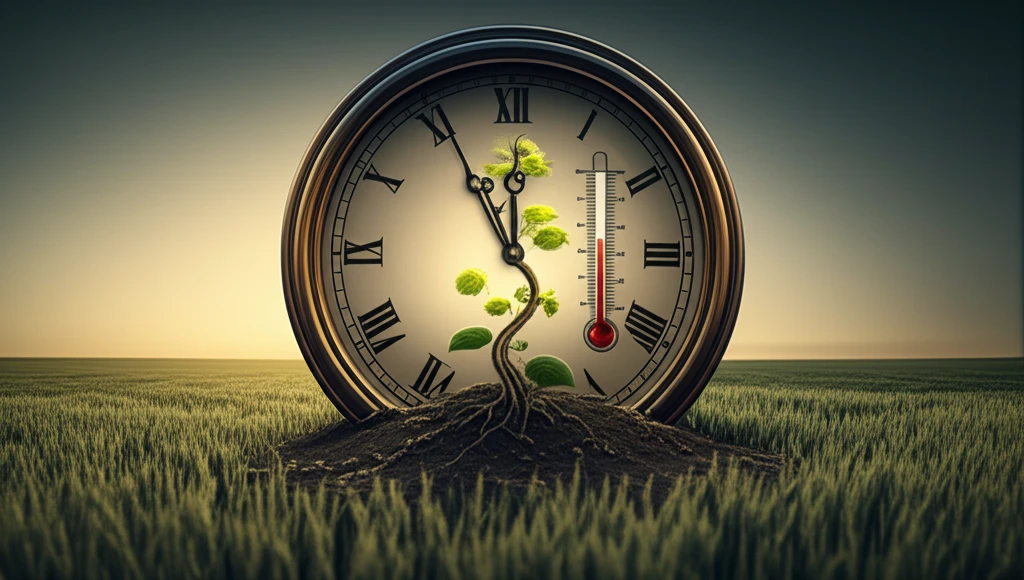
Decoding Thermal Time: A Simple Guide to Plant Development Prediction
"Unlock the secrets of how temperature drives plant growth and development with our easy-to-understand breakdown of thermal time."
For centuries, predicting how temperature affects plant development has been a key focus for scientists and farmers alike. Knowing when a plant will reach a specific stage is crucial for everything from planting schedules to anticipating crop yields. Early efforts in crop modeling accelerated this field, particularly as the need to predict the impact of climate change on agriculture became increasingly urgent.
Across various crops like wheat and maize, studies have revealed a common temperature response pattern in developmental processes. This led to the concept of 'thermal time,' a way to quantify the heat accumulation needed for a plant to reach a certain stage. Thermal time is considered a valid measure for all developmental processes of a plant and is widely used in crop models.
Thermal time is valuable because it allows researchers to analyze the effects of other environmental factors by accounting for temperature changes. This means understanding how plants grow in fluctuating temperatures as if the temperature were constant. However, the concept can seem complex due to the many ways it's calculated.
What Exactly is Thermal Time and How Does It Work?

At its core, thermal time is a measure of the accumulated heat units required for a plant to progress through its development stages. It acknowledges that plant development doesn't simply follow a calendar; it's strongly influenced by temperature. Different plants need a certain amount of 'warmth' to trigger specific changes, such as germination, leaf growth, or flowering.
- Base Temperature: Every plant species has a base temperature, below which development stalls.
- Daily Accumulation: Thermal time is accumulated only when the average daily temperature is above the base temperature.
- Thresholds: Each developmental stage has a thermal time threshold that needs to be met.
Putting It All Together
Thermal time models can be powerful tools, but it’s essential to recognize their limitations and potential sources of error. By understanding the underlying principles and being mindful of factors like air vs. plant temperature, water availability, and the time step used for calculations, you can get the most accurate predictions and insights into plant development. Whether you're a seasoned farmer or a home gardener, mastering the concept of thermal time can lead to better planning and greater success in your growing endeavors.
